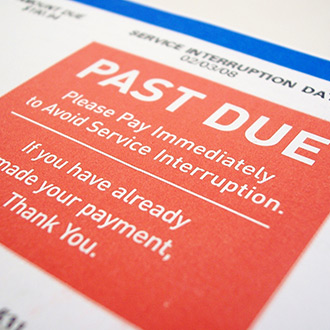Forex Risks - Common Risk Factors in Currency Markets
Forex, or foreign exchange, involves the trading of currency pairs. When you go long on EUR/USD, for example, you are hoping that the value of the Euro will increase relative to the U.S. Dollar.
As with any investment, you could guess wrong and the trade could move against you. That’s the most obvious risk when trading the FX markets. You can incur additional risk by trading less popular (and so less liquid) currency pairs and by getting into a situation where the transaction itself is unstable, because you have not properly managed your margin account or you have chosen an unreliable broker or trading exchange.
It’s useful to keep in mind that the vast majority of forex transactions are made by banks, not individuals, and they are actually using forex to reduce the risk of currency fluctuation. They use complex algorithms in their computerized trading systems to manage some of the risks described below. As an individual, you could be less subject to many of these risks, and others could be minimized through sound trade management. Any investment that offers potential profit also has downside risk, up to the point of losing much more than the value of your transaction when trading on margin. This article can help you understand more about the risks so you can trade with higher confidence.
The following are the major risk factors in FX trading:
- Exchange Rate Risk
- Interest Rate Risk
- Credit Risk
- Country Risk
- Liquidity Risk
- Marginal or Leverage Risk
- Transactional Risk
- Risk of Ruin
Exchange Rate Risk

Exchange rate risk is the risk caused by changes in the value of currency. It is based on the effect of continuous and usually volatile shifts in the worldwide supply and demand balance.
For the period the trader’s position is outstanding, the position is subject to all price changes.
This risk can be quite substantial and is based on the market's perception of which way the currencies will move based on all possible factors that happen (or could happen) at any given time, anywhere in the world.
Additionally, because the off-exchange trading of Forex is largely unregulated, no daily price limits are imposed as exist for regulated futures exchanges.
The market moves based on fundamental and technical factors - more about this later.
The most popular methodology implemented in trading is minimizing losses and increasing the potential for return, in order to ensure that losses are kept within manageable limits. This common sense methodology includes:
The Position Limit
A position limit is the maximum amount of any currency a trader is allowed to carry, at any single time.
The Loss Limit
The loss limit is a measure designed to avoid unsustainable losses made by traders by means of setting stop loss levels. It is
imperative that you have stop loss orders in place.
Risk / Reward Ratios
A method traders use as a guideline when trying to control exchange rate risk is to measure their intended gains against
their possible losses. The idea is that most traders will lose twice as many times as they profit, so a guide to trading is to
keep your risk/reward ratio to 1:3. This is illustrated in detail in a later section.
Interest Rate Risk

Interest rate risk refers to the profit
and loss generated by fluctuations in the forward spreads, along with forward amount mismatches and maturity gaps among transactions
in the foreign exchange book. This risk is pertinent to currency swaps; forward outright, futures, and options. To minimize interest
rate risk, one sets limits on the total size of mismatches. A common approach is to separate the mismatches, based on their maturity
dates, into up to six months and past six months. All the transactions are entered in computerized systems in order to calculate the
positions for all the dates of the delivery, gains and losses. Continuous analysis of the interest rate environment is necessary to
forecast any changes that may impact on the outstanding gaps.
Credit Risk

Credit risk refers to the possibility that an
outstanding currency position may not be repaid as agreed, due to a voluntary or involuntary action by a counterparty. Credit risk is
usually something that is a concern of corporations and banks. For the individual trader (trading on margin), credit risk is very low
as this also holds true for companies registered in and regulated by the authorities in G-7 countries. In recent years, the National
Futures Association (NFA) and the Commodity Futures Trading Commission (CFTC) have asserted their jurisdiction over the FX markets in the
US and continue to crack down on unregistered FX firms. Countries in Western Europe follow the guidelines of the Financial Services Authority in the UK.
This authority has the strictest rules of any country in making sure that FX companies under their jurisdiction are keeping qualified
customer funds secure. It is important for all individual traders to thoroughly check out companies before sending any funds for
trading. It is fairly easy to check out the companies you are considering by visiting the authorities' websites:
Most companies are happy to answer inquiries from customers and often post notices pertaining to security of funds on their website. It should be
noted, however, that minimum capital requirements for Futures Commission Merchants ("FCMs") registered with the CFTC are much less than
those of banks, and under present CFTC regulations and NFA rules, protections related to the segregation of customer funds for
regulated futures accounts do not extend fully to funds deposited to collateralize off-exchange currency trading. For these and other
reasons, the CFTC and NFA discourage any representation that the registration status of a Futures Commission Merchant substantially
reduces the risks inherent in over-the-counter Forex trading.
The known forms of credit risk are:
Replacement Risk
Replacement risk occurs when counter-parties of a failed bank or Forex broker find they are at risk of not receiving their funds
from the failed bank.
Settlement Risk
Settlement risk occurs because of the difference of time zones on different continents. Consequently, currencies may be traded at
different prices at different times during the trading day. Australian and New Zealand Dollars are credited first, then the Japanese Yen,
followed by the European currencies and ending with the US Dollar. Therefore, payment may be made to a party that will declare
insolvency or be declared insolvent, prior to that party executing its own payments.
In assessing credit risk, the trader must consider not only the market value of their currency portfolios, but also the potential
exposure of these portfolios.
The potential exposure may be determined through probability analysis over the time to maturity of the outstanding position. The
computerized systems currently available are very useful in implementing credit risk policies. Credit lines are easily monitored. In
addition, the matching systems introduced in foreign exchange since April 1993, are used by traders for credit policy implementation
as well. Traders input the total line of credit for a specific counter-party. During the trading session, the line of credit is
automatically adjusted. If the line is fully used, the system will prevent the trader from further dealing with that counter-party.
After maturity, the credit line reverts to its original level.
Counter-party Default Risk
Over-the-counter ("OTC") spot and forward contracts in currencies are not traded on exchanges; rather, banks and FCM's typically act as
principals in this market. Because performance of spot and forward contracts on currencies is not guaranteed by any exchange or clearing house,
the client is subject to counter-party risk -- the risk that the principals with a trader, the trader's bank or FCM, or the counter-parties with
which the bank or FCM trades, will be unable or will refuse to perform with respect to such contracts. Furthermore, principals in the spot and
forward markets have no obligation to continue to make markets in the spot and forward contracts traded.
In addition, the non-centralized nature of the Foreign Exchange market produces the following complications:
A bank or FCM may decline to execute an order in a currency market which it believes to present a higher than acceptable level of
risk to its operations. Because there is no central clearing mechanism to guarantee OTC trades, each bank or FCM must apply its own
risk analysis in deciding whether to participate in a particular market where its credit must stand behind each trade. Depending on
the policies adopted by each counter-party, a given bank or FCM may decline to execute an order placed by a trader/customer. This has
happened on occasion in the past, and will no doubt happen again, in response to volatile market conditions.
Because there is no central marketplace disseminating minute-by-minute time and sales reports, banks and FCMs must rely on their
own knowledge of prevailing market prices in agreeing to an execution price. The execution price obtained for a trader/customer to a
large extent will reflect the expertise of the bank or FCM in trading the particular currency. While the OTC interbank market as a
whole is highly liquid, certain currencies, known as exotics, are less frequently traded by any but the largest dealers. For this
reason, a less experienced counter-party may take longer to fill an order or may obtain an execution price that differs widely from
what a more experienced or larger counter-party will obtain. As a consequence, two participants trading in the same markets through
different counter-parties may achieve markedly different rates of return during times of high market volatility.
The financial failure of counter-parties could result in substantial losses. Again, when trading Foreign Currencies on an OTC
basis, the trader/customer will be dealing with institutions as principals and institutions may be subject to losses or insolvency. In
case of any such bankruptcy or loss, the trader might recover, even in respect of property specifically traceable to his or her
account, only a pro rata share of all property available for distribution to all of the counter-party's customers.
While that portion of a trader/customer's assets deposited with an FCM with respect to regulated exchange traded futures will be
subject to the limited regulatory protections afforded by the client segregation rules and procedures, customer funds deposited to
secure or margin OTC Foreign Exchange trading will not have such protection, as FCM's are exempt from substantial regulation under the
Commodity Exchange Act for their activities as counter-party to non-exchange traded currency contracts.
Country and Liquidity Risk
Although the liquidity of OTC Forex is in general much greater than that of exchange traded currency futures, periods of illiquidity
nonetheless have been seen, especially outside of US and European trading hours. Additionally, several nations or groups of nations have
in the past imposed trading limits or restrictions on the amount by which the price of certain Foreign Exchange rates may vary during a
given time period, the volume which may be traded, or have imposed restrictions or penalties for carrying positions in certain foreign
currencies over time. Such limits may prevent trades from being executed during a given trading period. Such restrictions or limits could
prevent a trader from promptly liquidating unfavorable positions and, therefore could subject the trader's account to substantial losses.
In addition, even in cases where Foreign Exchange prices have not become subject to governmental restrictions, the General Partner may be
unable to execute trades at favorable prices if the liquidity of the market is not adequate. It is also possible for a nation or group of
nations to restrict the transfer of currencies across national borders, suspend or restrict the exchange or trading of a particular
currency, issue entirely new currencies to supplant old ones, order immediate settlement of a particular currency obligations, or
order that trading in a particular currency be conducted for liquidation only. OTC Forex is traded on a number of non-US markets,
which may be substantially more prone to periods of illiquidity than the United States markets due to a variety of factors.
Additionally, even where stop loss or limit orders are put in place to attempt to limit losses, these orders may not be executable
in very illiquid markets, or may be filled at unforeseeably unfavorable price levels where illiquidity or extreme volatility prevent
their more favorable execution.
Leverage Risk

Low margin deposits or trade collateral are
normally required in Foreign Exchange, (just as with regulated commodity futures). These margin policies permit a high degree of
leverage. Accordingly, a relatively small price movement in a contract may result in immediate and substantial losses in excess of the
amount invested. For example, if at the time of purchase, 10% of the price of a contract were deposited as margin, a 10% decrease in
the price of the contract would, if the contract were then closed out, result in a total loss of the margin deposit before any
deduction for brokerage commissions. A decrease of more than 10% would result in a total loss of the margin deposit. Some traders may
decide to commit up to 100% of their account assets for margin or collateral for Foreign Exchange trading. Traders should be aware
that the aggressive use of leverage will increase losses during periods of unfavorable performance.
Transactional Risk
Errors in the communication, handling and confirmation of a trader's orders (sometimes referred to as "out trades") may result in
unforeseen losses. Often, even where an out trade is substantially the fault of the dealing counter-party institution, the
trader/customer's recourse may be limited in seeking compensation for resulting losses in the account.
Risk of Ruin
Even where a trader/customer's medium to longer term view of the market may be ultimately correct, the trader may not be able to
financially bear short-term unrealized losses, and may close out a position at a loss simply because he or she is unable to meet a
margin call or otherwise sustain such positions. Thus, even where a trader's view of the market is correct, and a currency position
may ultimately turn around and become profitable had it been held, traders with insufficient capital may experience losses.
Get Started with Your Financial Education
This content is intended to provide educational information only. This information should not be construed
as individual or customized legal, tax, financial or investment services. As each individual's situation
is unique, a qualified professional should be consulted before making legal, tax, financial and investment
decisions.
The educational information provided in this article does not comprise any course or a part of any course
that may be used as an educational credit for any certification purpose and will not prepare any User
to be accredited for any licenses in any industry and will not prepare any User to get a job. Past
results are not a guaranty of future performance.